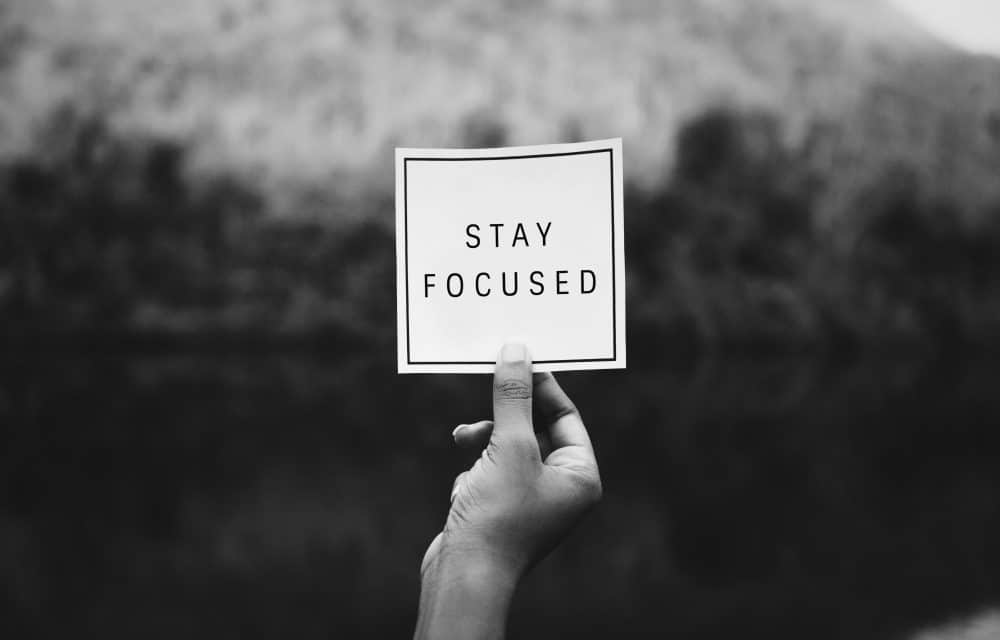Have You Tried Coconut Oil For Weight Loss
Have you considered coconut oil for weight loss? Some of my clients in Louisville, KY have been asking whether it should be a consideration for their weight loss plan. When I hear these types of easy weight loss aids, I always tell people to stop and consider both the pros and cons of using anything. First of all, coconut oil is a fat and it’s 90 percent saturated fat. That type of fat plays a negative role in heart health and raises cholesterol levels. It increases the bad LDL cholesterol.
Proponents of coconut oil say it’s different from other saturated fats.
The author of the book, The Coconut Oil Miracle, certified nutritionist Bruce Fife, disagrees. He claims that the fat in coconut oil actually can help the body burn fat. It’s a medium-chain triglyceride—MCT—that doesn’t follow the route most saturated fat takes, which then makes it compete with glucose—a simple sugar—as the energy source. He says it then increases the metabolism and aids in weight loss in specific areas, such as burning belly fat.
Just like any fat in your diet, coconut oil can make you feel fuller for longer.
There’s some evidence that oils that are MCT does aid with weight loss. One study shows that consuming it rather than long chain fatty acids, such as avocado oil or soybean oil, can actually help you burn more calories. The body’s metabolism increases for as long as 24 hours when the cells use these types of oils for fuel instead of glucose. It’s true of all MCT oil. Unfortunately, coconut oil isn’t pure MCT. Only 13.5 percent of it is MCT. That means that to get the 10 grams of MCT, you’d have to consume 80 grams of coconut oil or almost 6 tablespoons of it daily. That’s a whole lot of fat!
A small study shows that it can blast stomach fat, but is it healthy.
Studies comparing weight loss by consuming either coconut oil or soybean oil, found both groups lost weight, but those using coconut oil lost belly fat, but the amount taken in both cases was twice as much as recommended for good health. It can be your go to oil for salads or other types of cooking, but shouldn’t be increased in your diet just for weight loss. Instead, eating healthy should be at the top of your list for weight loss.
If you’re going to use coconut oil, use organic, unrefined, virgin coconut oil. It has more of a coconut smell and taste, but is healthier.
The feeling of fullness brought by coconut oil is also the reason that low fat foods don’t satisfy your appetite.
There is no miracle food that you can take that will help you lose weight without changing to a healthy diet and regular exercise.
Whether you opt for private sessions, small group or online help, Body Sculptors can help. No matter where you live, our online nutrition training can help you with a healthy fat loss program that costs less than a dollar a day.
When You Eat Makes A Difference
 You probably thought that losing weight was all about what you ate and how much, but did you know that when you eat makes a difference, too? Of course, not as much as the food you choose or the calories you consume. You may have heard that breakfast was the most important meal of the day. There’s a lot of truth to that, although it’s not that simple. Everyone is different, so for some body types, it can be different.
You probably thought that losing weight was all about what you ate and how much, but did you know that when you eat makes a difference, too? Of course, not as much as the food you choose or the calories you consume. You may have heard that breakfast was the most important meal of the day. There’s a lot of truth to that, although it’s not that simple. Everyone is different, so for some body types, it can be different.
Eating carbs earlier in the day is important for weight loss.
If you want your best performance right from the start, eat a healthy breakfast. Studies show that if your first meal of the day provides healthy calories, you have the energy for improved cognitive performance, which includes better focus and task performance all day long. These studies are primarily focused on children under the age of 18. What eating your carbs earlier in the day does for everyone, is to give your body time to burn off the energy, rather than allowing it to be stored as fat while you sleep.
Some conditions not only require eating healthy in the morning, but also throughout the day.
If you have diabetes or other health conditions, keeping your blood sugar level is top priority. A consistent pattern of eating with food that maintains blood sugar levels, rather than spiking them, is important. For the rest of us, switching your food intake from late at night to earlier in the day can help benefit your health. If you don’t like cereal or a farmhouse breakfast of flapjacks, eggs, grits, potatoes and bacon, don’t follow the breakfast tradition. Eat your favorite healthy food, such as egg salad, lentil soup or a stir fry with a side of cantaloupe or watermelon. Have healthy breakfast muffins with a hidden baked egg inside, veggie muffins or even a zucchini bread muffin with nuts.
Boost your performance with healthy eating in the morning.
If you simply can’t stomach food the first thing in the morning, why push it. Instead, create healthy snack “breakfasts” to eat mid morning. It can help you from grabbing a quick candy bar or sugary treat from the snack vendor, while boosting your performance. Carrot cake oatmeal muffins with nuts provide great nutrition, so does cheese and herb muffins, without spiking your blood sugar levels.
- Before you exercise, fuel up. Eat some carbs and protein two hours before you workout. PB&J, trail mix or some whole grain cereal sprinkled on top of unsweetened yogurt with fresh fruit can do the trick. If your time is limited, eat a small piece of fruit a few minutes before you workout.
- Don’t forget to drink a bottle of water and hydrate. You should always have a bottle of water at hand and drink it before, during and after a workout.
- Within 45 minutes after you workout, eat a snack bursting with protein and some carbs, such as a turkey wrap with lettuce, spinach, tomato and even some avocado. Your body needs protein to build muscles. Even Greek yogurt with fresh fruit is good.
- Our Body Sculptors online nutrition program offers recipes and help for eating healthy and eating at the perfect time for your body to work most efficiently.
For more information, contact us today at Body Sculptors Personal Training!
Switch Out That Junk Food For A Healthier Option
 I’m proud of our online nutrition program. It makes it easier for people in Louisville, KY, to stick with a healthier eating program and eliminate junk food for a healthier option and also can be a source of healthier eating for people all over the world. Helping as many people as possible has always been a lifelong dream and now technology makes it possible and far more convenient for clients. The first step to becoming healthier and achieving your appropriate weight has always been a healthy diet, followed with a program of regular exercise.
I’m proud of our online nutrition program. It makes it easier for people in Louisville, KY, to stick with a healthier eating program and eliminate junk food for a healthier option and also can be a source of healthier eating for people all over the world. Helping as many people as possible has always been a lifelong dream and now technology makes it possible and far more convenient for clients. The first step to becoming healthier and achieving your appropriate weight has always been a healthy diet, followed with a program of regular exercise.
Pass up the potato chips and opt for some almonds.
You may have a craving for candy or a taste for that salty crunch of a chip, but those won’t get you on the road to better health. Sugary treats, such as candy are especially difficult to kick, since sugar is addictive. It actually stimulates the same area of the brain as cocaine and triggers the release of dopamine, the happy hormone, which also occurs when you take opioids. Most people find that if they focus primarily on giving up sugar for the first few weeks, the rest of healthy eating is a piece of cake, or should I say a piece of fruit!
Start reading labels.
You’ll feel like you’re back in chem lab or getting a new additive for your car when you read the labels on some of your favorite junk foods. Preparation is the key if you’re serious about changing your eating habits. Create your own treats like trail mix, by purchasing bulk items such as nuts and seeds. You can even add a bit of dried fruit for the sugar. Treats you can make yourself include raw veggies and healthy dip or sliced fresh fruits with a bit of nut butter on the slices. Have them ready for those times you need something sweet or quick to satisfy your craving.
Do the two month test.
Most people will change their habit in about six to eight weeks, which also includes eating habits. If you do nothing else for that first eight weeks, find what you indulge in most and give it up, choosing healthier options instead. Most people give up sugar, including soft drinks or anything with added sugar like canned fruit or sweetened yogurt. You’ll be amazed at how you can start to taste the natural sweetness and even identify added sugar when you eat in restaurants. It’s everywhere, including places you might not expect, like in bread, sauces, soup or peanut butter.
- Have fresh fruit washed and cut up, ready to eat for an any time in the day snack. You’ll be amazed at how quickly cut up watermelon and cantaloupe is eaten when you can grab a bite-size square of it out of a bowl.
- Make your healthy meals with eye appeal. Bright colored vegetables on a platter that includes red, yellow and green pepper slices, carrots and celery has eye appeal. Include as many colors as possible for your fresh fruit and vegetable treats. Eye appeal is important.
- Take the time to plan your weekly meals. Create a grocery list and shop all at one time, after you have eaten. Spend one day a week cooking for the whole week and make extra to freeze for the future. You’ll be less apt to stop for fast food. The Body Sculptors’ program provides recipes and meal plans.
- Sometimes thirst is masked as hunger. Have a bottle of water ready when you feel hungry and see if that solves your desire. Say no to sugary drinks and yes to calorie free ones, like unsweetened green tea or water.
For more information, contact us today at Body Sculptors Personal Training
Fitness Success Requires The Right Mindset
 If you want fitness success, you have to have the right mindset. Exercising and eating healthy is more than just a physical activity, it takes focus and is just as much of a mental activity, too. When you workout, you’re not just training your body, you’re training the neurons in the brain. There have been a number of studies showing that mental practice helps improve performance as much as physical practice. Visualization has helped both Olympic champions improve their performance, as well as helping POWs survive and remain as healthy as possible in extremely poor conditions.
If you want fitness success, you have to have the right mindset. Exercising and eating healthy is more than just a physical activity, it takes focus and is just as much of a mental activity, too. When you workout, you’re not just training your body, you’re training the neurons in the brain. There have been a number of studies showing that mental practice helps improve performance as much as physical practice. Visualization has helped both Olympic champions improve their performance, as well as helping POWs survive and remain as healthy as possible in extremely poor conditions.
When you change your mindset, you can also change your outcome.
Do you dread going to the gym? It might show in how hard you workout and even in your results. It’s far easier to skip a workout when you have a negative attitude and allow things like feeling slightly out of sorts or a tough day get in the way. Find ways to give yourself a mental hug for every successful activity or each time you not only conquered your goal but exceeded it.
Being a curmudgeon never got anyone fitter.
Picture all the crabby people in your head. You don’t often think of attractive ones, but old curmudgeons that could kill Tinkerbell with their bad attitude. If you’re overweight, don’t beat yourself up because of past indiscretions with food. You can’t change the past, just make a better, more appealing future. Leave negativity at the door and don’t think of your workout as punishment, but a treat for your body to become healthier.
Don’t let the scales slap you around, they’re your helper, not your master.
Too often I see people fearing a weigh-in and even getting depressed when the numbers aren’t what they hoped. Of course, you have to track your progress, but weight loss isn’t the only one to track. Some times, you lose inches instead of pounds. Muscle weighs more per cubic inch than fat does, so a pound of muscle will take up less space, which means you lose inches, but not pounds. That’s still great!!! AND IS PROGRESS. Don’t weigh in every hour, but save it for once or twice a week at the same time each day.
- The gym may be where you start your effort for a healthier life, but it’s not the ultimate place. You workout to have energy for an active lifestyle. Remember that. Doing fun, active things for enjoyment is just as important. Go out dancing, take a hike or ride a bike!
- Find ways to boost your fitness on a daily basis. Park further from the grocery store door, take the stairs at work or get up and walk a few minutes of each hour.
- Enjoy your workout more with a workout buddy. Not only will working out with someone keep you accountable, it makes it more fun. It’s one reason our small group training is so popular.
- If you want to create more of a social atmosphere, get a group to sign up for Body Sculptors’ online program for healthy eating and exercise. Make it a guys’, couples’ or girls’ project toward good health and use it for socializing and fitness.
For more information, contact us today at Body Sculptors Personal Training!
Motivate Yourself To Workout
 It’s not always easy to drag yourself to your workout, it’s time to find ways to motivate yourself. That feeling of dread or lack of caring can get worse if you don’t nip it in the bud now. It doesn’t matter what the goal, even if it’s not fitness related, the reason you started originally is key. That goal was important enough for you to start the journey, so it needs to be kept in the foreground. Whether it’s weight loss, health issues or just looking and feeling great again, it should be primary your focus.
It’s not always easy to drag yourself to your workout, it’s time to find ways to motivate yourself. That feeling of dread or lack of caring can get worse if you don’t nip it in the bud now. It doesn’t matter what the goal, even if it’s not fitness related, the reason you started originally is key. That goal was important enough for you to start the journey, so it needs to be kept in the foreground. Whether it’s weight loss, health issues or just looking and feeling great again, it should be primary your focus.
Focus on your goals
No matter what your primary motivation, if it’s important to you, it’s important. Don’t feel bad if you just want to look better. There’s nothing wrong with that, even if it was just to get in shape for your next class reunion or family get-together. That original motivation should be the basis of your goals. Ensure that you break the big goal down to smaller steps that you can achieve quicker to keep your motivation high. That allows you to achieve success along the way and that’s really motivating.
Find several ways to measure your success.
Maybe your goal was weight loss, so immediately you think that weighing yourself is the only way to see success. It’s not. Measuring inches lost is another way to do it. In fact, it may be a better way, since muscle tissue weighs more than fat tissue does per cubic inch, so your body will be narrower the less fat tissue you have. Use several markers to boost your motivation, including how well your clothing fits.
Get a workout partner.
One reason personal trainers increase your success is that they hold you accountable. Just knowing that you are meeting with the trainer keeps you going to the gym. The same can be true with a workout partner. Not only does knowing you’re meeting with them add extra incentive to go to the gym to workout, it also can add fun and maybe some friendly competition. Two heads are better than one and you can each check the other’s form to make sure each movement is done right.
- Your focus is the key. If you’re constantly thinking about how you dread working out, you need to change it. Instead, focus on how great you feel when you’re finished or how much more energy you have.
- Don’t let a bad day stop you. That’s actually when you need a workout most. If you’ve had the day from Hades, think about how great you’ll feel as your hard work during exercise helps melt stress.
- Create a schedule and make working out a habit. Exercise at the same time every day. It’s a lifestyle change. If you always workout at four o’clock, you’ll develop a habit, making it easier to go to the gym.
- Whether you’re working out with our online program or come to the gym, our staff of professionals at Body Sculptors not only help you with your workout and dietary needs, they keep you motivated. Get a free consultation today.
For more information, click here today: bodysculptorspersonaltraining.com
Keep Hydrated
 When the temperature rises here in Louisville, KY, it’s extremely important to keep hydrated, especially if you’re working out. Water is your friend. Don’t turn to soft drinks! The caffeine in coke will act as a diuretic and you’ll flush away any hydrating benefits it brought. Instead, always carry a bottle of water with you and sip on it frequently as you workout. Your body is mostly water, so keeping it hydrated keeps you functioning at peak performance. You should be drinking at least eight 8-ounce glasses a day normally and more in the summer.
When the temperature rises here in Louisville, KY, it’s extremely important to keep hydrated, especially if you’re working out. Water is your friend. Don’t turn to soft drinks! The caffeine in coke will act as a diuretic and you’ll flush away any hydrating benefits it brought. Instead, always carry a bottle of water with you and sip on it frequently as you workout. Your body is mostly water, so keeping it hydrated keeps you functioning at peak performance. You should be drinking at least eight 8-ounce glasses a day normally and more in the summer.
Make drinking water a habit.
I focus on water and not on sports drinks, because you don’t need a sports drink during a regular workout. If you’re working out longer, like over an hour, you may need to replace electrolytes, which is where sports drinks shine. Some are better than others are. For instance, Gatoraid contains a lot of sugar, whereas BodyArmor has electrolytes that aid in hydration, but is also lower in sodium and higher in potassium since it’s based on coconut water. Water should be the drink of choice most of the time. It’s easy to access, free from the tap and has always done a great job hydrating. Make it a habit to start each day with one or two eight ounce glasses of water.
Your brain and your heart are 73% water and your lungs are 83%.
If you want a healthy body that won’t fail you during the day, stay hydrated. You can imagine how dehydration can affect your body and make it harder to function. It helps regulate your temperature and aids in new cell development. Your joints will feel achy if you don’t drink enough water, since it acts as a lubricant. Water is the quicker picker upper, too. You’ll get a boost of energy from a glass of water if you’re slightly dehydrated. Too little water can make you feel the brain fog.
If you’re trying to lose weight, water can help.
Have you ever found yourself hungry, but for something juicy? You’re probably thirsty and not hungry. The body gets tricked and sends out a hunger signal, when a thirst signal should be at the top of the list. Carry a bottle of water at all times and when you feel hungry, drink some and wait to see if that hunger subsides. Staying hydrated helps you in all areas, even weight loss.
- Dehydration can be far more than just getting achy, mentally foggy and thirsty. It can be life threatening. Besides headache, muscle contractions in your arms leg and back, it can cause convulsions, heart failure and other serious conditions.
- Seniors dehydrate faster than others and often don’t drink enough water, sometimes signs of dehydration like mental confusion, are mistaken for senility. Dehydration can also cause frequent UTIs.
- If you want to look younger, stick with plenty of water and hydrate often. It keeps your skin from looking dry and less plump. Staying hydrated helps prevent premature wrinkles and keeps your eyes more youthful.
- Whether you’re working out at Body Sculptors, outside or have chosen online training, staying hydrated is important. If you haven’t started a healthy diet and exercise program yet, contact me for a free personal training evaluation.
For more information, click here today: bodysculptorspersonaltraining.com
Do You Need A Recharge?
 There are two reasons to take a break, you either are over-exercising or in other words, just plain burned out. Either way, you need a recharge so you get the maximum benefit in the gym. If you’re over-exercising/burned out, you’re pushing yourself too much and not giving your body a time to heal. It’s actually a physical condition that often occurs when people absolutely love exercise or those who want to reach a goal faster and think putting in even more time will do it. For those that are simply burned out
There are two reasons to take a break, you either are over-exercising or in other words, just plain burned out. Either way, you need a recharge so you get the maximum benefit in the gym. If you’re over-exercising/burned out, you’re pushing yourself too much and not giving your body a time to heal. It’s actually a physical condition that often occurs when people absolutely love exercise or those who want to reach a goal faster and think putting in even more time will do it. For those that are simply burned out
Here are some of the things that cause burnout.
Are you giving your body a chance to heal by ensuring you have a day between tough workouts? If you’re doing heavy-duty strength training, consider only doing that type of training one or two days a week. Otherwise, working out every other day or three days a week is correct. Working out longer isn’t necessarily good, either. That’s especially true if you’re doing high-intensity workouts.
You might be having a mental burnout if you’ve done the same workout for a long time.
Burn out can occur from boredom, which makes it more mental than physical. If you’ve been working out with the same routine for longer than six months, it’s time to make some changes. That’s far too long. Not only is it boring, your body become more efficient at the movements so you won’t benefit as much. If you hate your workout, you’ll make yourself more susceptible to burnout. There’s so many great ways to workout, you should never have to do anything you hate.
If you recognize these symptoms, it may be time to take a break.
Are you feeling tired after a workout rather than energized? You could be facing burnout. Are you moody and irritable without provocation? If your body isn’t give time to recoup, you’ll feel fatigued and it can cause irritability. Getting too much sleep or too little is another sign it’s time to take a break, so is the feeling that your legs are dead weights. An impaired immune system and tendency to get sick a lot is another. So is getting sore for several days in a row. Most of all, feeling unmotivated in all areas in your life may come from working out too much.
- Taking a break doesn’t mean you quit exercising. It means to switch up your exercise for a week or two to something less strenuous or completely different, like rock climbing or just taking long walks.
- Know that you need to have a healthy body, but also a healthy mind and spirit. Taking time to learn meditation techniques or making time to take a walk in nature on your day off from working out can be quite renewing. Work to create a balance.
- Switch your workout frequently and include other types of exercise. You won’t get bored if you’re not doing the same thing repeatedly.
- Create a goal and a plan to achieve it that’s right for your level of fitness an needs. Follow the plan and don’t overwork. At Body Sculptors, we create a plan for you and make sure you’re never bored. Contact us soon to see just how much we have to offer.
For more information, click here today: bodysculptorspersonaltraining.com
Girls Gone Strong
 If you think lifting weights is just for men, step up to this century. We have a lot of women in Louisville, KY, that press weights or do body exercises to build strength. It’s just as important or women to build strength as it is for me. It’s not just for heavy lifting they may have to do, it’s for aiding in weight control and the health benefits strength building brings. I love to refer to these women as girls gone strong because I’m so proud of their accomplishments. They know all the benefits of strength building.
If you think lifting weights is just for men, step up to this century. We have a lot of women in Louisville, KY, that press weights or do body exercises to build strength. It’s just as important or women to build strength as it is for me. It’s not just for heavy lifting they may have to do, it’s for aiding in weight control and the health benefits strength building brings. I love to refer to these women as girls gone strong because I’m so proud of their accomplishments. They know all the benefits of strength building.
The “Girls Gone Strong” know that building muscle tissue helps them lose weight faster.
Strength building isn’t about building bulging muscles, but it is about building muscles. The more muscle tissue you have, the easier it is to lose weight. That’s because muscle tissue requires more calories than fat tissue does, so you’ll be boosting your metabolism. Strength training also burns a high amount of calories, both when you do it and for hours after you quit. Unlike running, which burns calories from both fat and muscle tissue, leaving you with a lower metabolism, strength training tends to burn fat tissue.
Don’t worry about getting bulky and looking like the Hulk!
One of the biggest fears I hear when I suggest strength training to women is that they don’t want to look like the female body builders that could put the Hulk to shame. Those women spend hours and hours in the gym, eat special diets and unfortunately, sometimes take supplements to help them build. It’s not easy for a woman, since they don’t have the necessary hormones, like mien, to get big and bulky. You’ll get a toned, sinewy appearance that’s super sexy. You’ll look more like Linda Hamilton—Sarah Connor—than the Terminator.
Not only do you preserve muscle mass as you age, you preserve bone density.
The amount of muscle mass you have affects the amount of bone density you have. As the muscles tug on the bone, the body sends in materials to reinforce the bone and keep them dense. No tug? No need to keep them strong and loss of bone density. It can prevent and slow osteoporosis and some say it might even reverse it. Studies show, weight bearing exercises work better than some medications.
- Getting strong also helps you avoid injury. You have better balance and coordination, besides preventing muscle tears and injuries.
- Strength training improves heart health by lowering blood pressure and improving cholesterol levels. It boosts the good cholesterol levels.
- Strength training makes you look slimmer. People with more muscle mass tend to look slimmer than those that weigh the same, but have a higher ratio of fat. That’s because muscle tissue weighs more per cubic inch, so one pound of it would be in a smaller container than a pound of fat.
- Strength training helps you feel stronger and more independent. You’ll be amazed at how feeling strong can give you confidence to face any oncoming problem. It boosts your confidence and self-esteem.
Commit To Be Fit
 Commitment is what makes the difference between success and failure. Any goal worth achieving is worth working toward. It’s the same when it comes to good health. You have to commit to be fit. It’s like any other goal, without commitment, you won’t achieve it. Unfortunately, setting a goal is easy, but sticking with it is tough. There are things you can do to help strengthen your commitment.
Commitment is what makes the difference between success and failure. Any goal worth achieving is worth working toward. It’s the same when it comes to good health. You have to commit to be fit. It’s like any other goal, without commitment, you won’t achieve it. Unfortunately, setting a goal is easy, but sticking with it is tough. There are things you can do to help strengthen your commitment.
Schedule your workout.
Your workout should be as important as any other appointment. Scheduling it as an appointment makes it that way. One way to do it is to exercise the first thing in the morning. It can get your day started right and provide energy for the whole day. If you’re not a morning person, it may be a real challenge that takes some mental toughness to achieve.
Remember why you decided to get fit.
Were you feeling exhausted and tired all the time? Are you uncomfortable in your own skin…because there’s just too much of it? Do you want to help avoid a serious health condition or help improve your health? What was important to you at the time you made that commitment probably won’t change. Write it down. Put it on your mirror. Keep your mind focused on not only your goal but your reason for making that goal.
Pay attention to both the big victories and the small ones.
Sure, shedding fifty pounds is a huge accomplishment, but that takes time. Create smaller goals to celebrate along the way. You probably don’t remember when you first started walking, but your parents probably do. They applauded and praised every small, wobbly step. That and the desire to move on your own kept you going, no matter how many times you fell. Learn to love the accomplishments along the way.
- Use several different ways to measure success. You might not lose weight when you first start but you are losing inches and gaining muscle. For those who just want to get fitter, increasing the number of reps or lifting heavier weight.
- Make sure you have your clothes ready and everything packed. If you know you might not meet your scheduled appointment with the gym, take your gym bag anyway. Find a time to fit the workout into your day.
- Plan something new and exciting that you can do the fitter you get that you couldn’t do before you started. It can be something as simple as walking the whole day at an amusement park or more adventurous like rock climbing.
- Add activities you love to your workout. Not only should you vary your workout so you don’t get bored, try to do at least one or two fun activities to provide exercise.
- « Previous Page
- 1
- …
- 22
- 23
- 24
- 25
- 26
- …
- 33
- Next Page »








